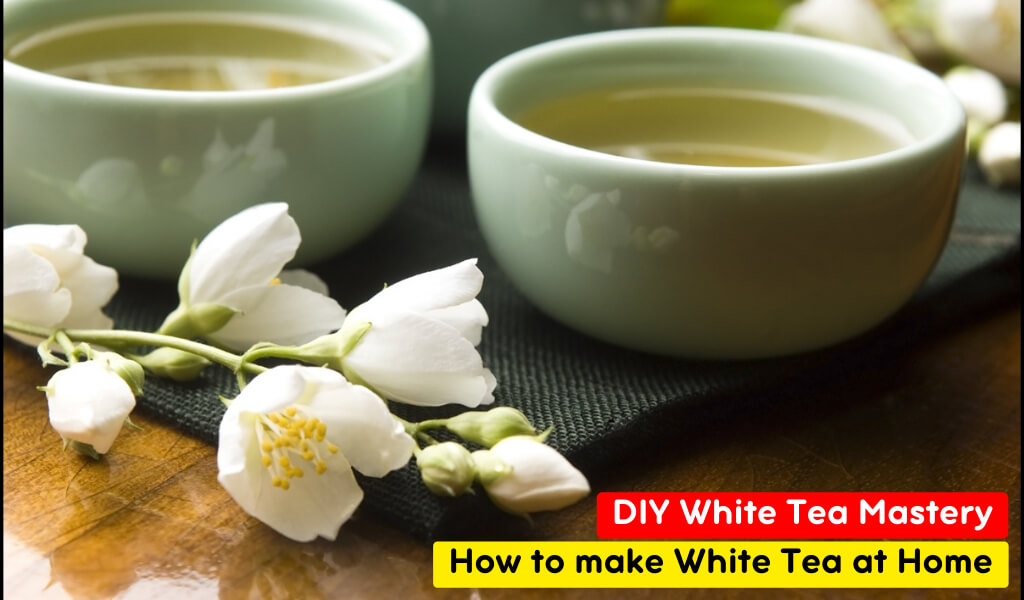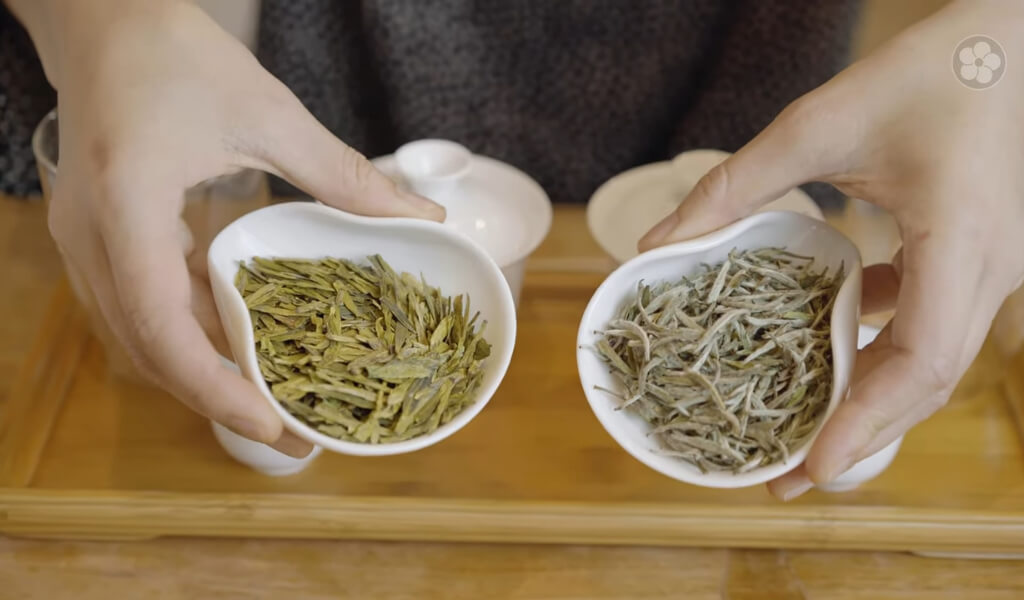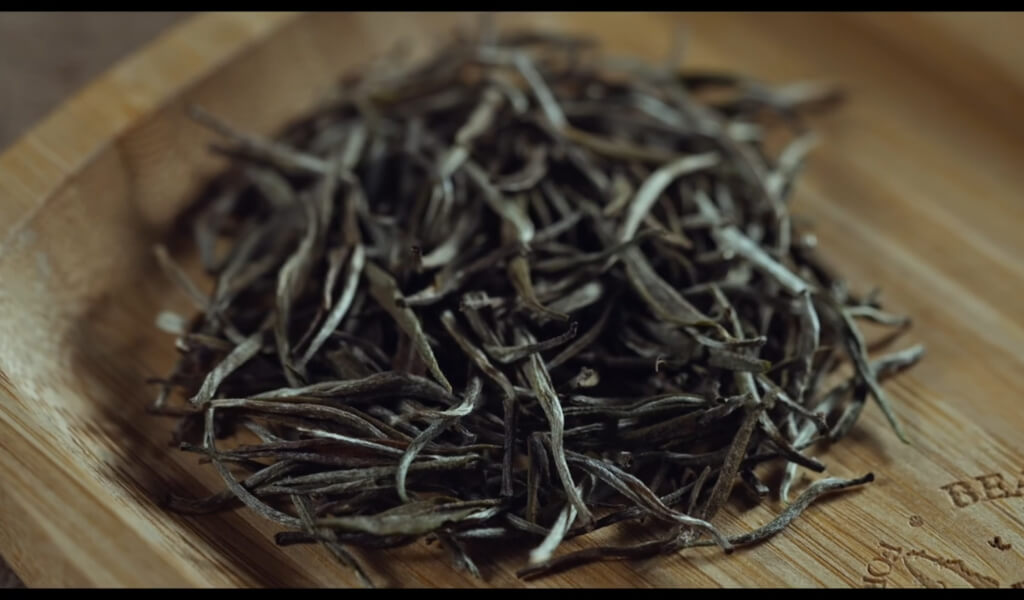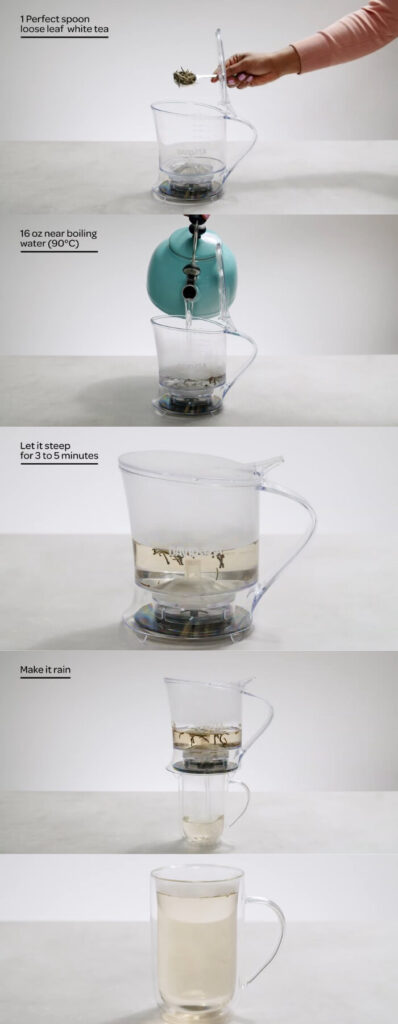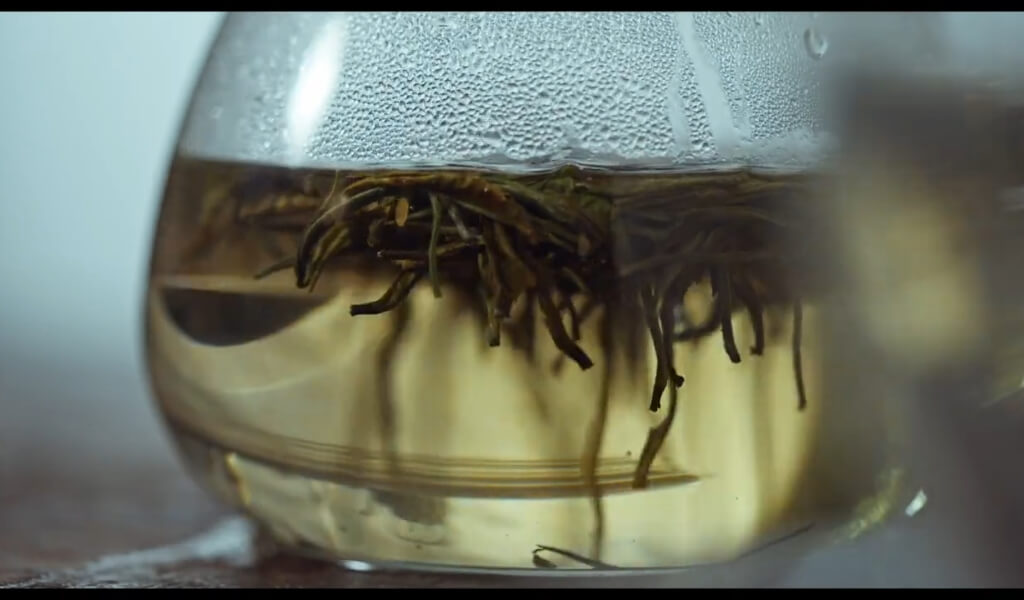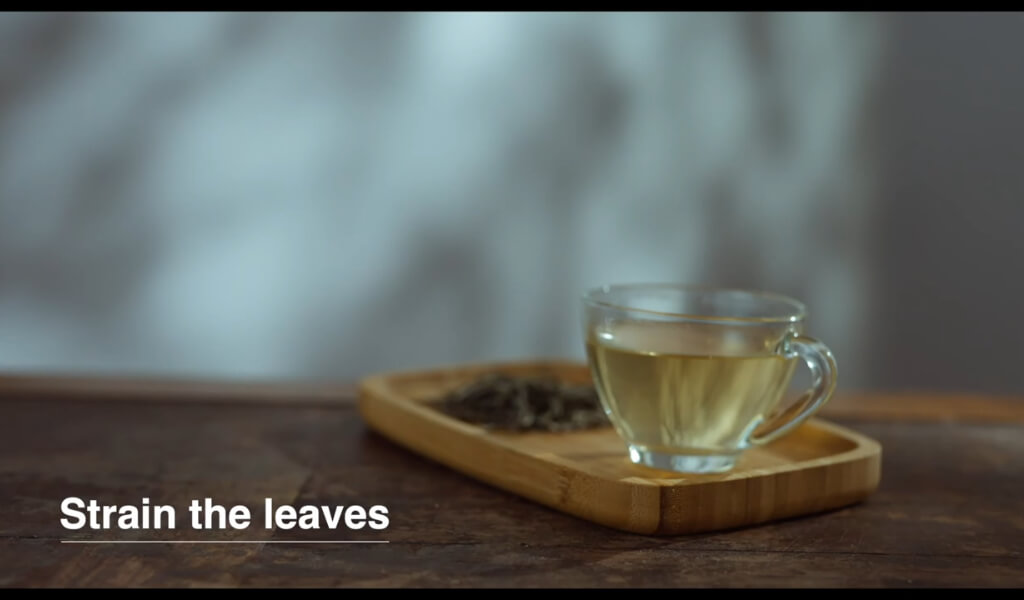Hello, tea lovers! I’m thrilled to share one of my favorite topics with you – how to make White tea at home.
You see, I’ve been honing my tea brewing skills for the better part of a decade and white tea, with its delicate flavor and soothing properties, is the crown jewel of my collection.
I believe that everyone should experience the bliss of a perfectly brewed cup of white tea, and with a few tips and tricks, I’ve learned that you, too, can bring this religious experience into your kitchen.
So, are you ready to embark on this journey with me? Let’s start brewing!
Quotes of tea with You
“No time is weird for a cup of tea, its always morning in some part of the world…”
– Nitya Prakash
Ingredients for Your White Tea Recipe
As someone who’s spent countless hours making White tea at home, I can’t stress enough how important it is to choose the right ingredients. It can truly make or break your white tea experience. So, here’s my advice:
Picking the Perfect White Tea Leaves
First and foremost, it’s all about the tea leaves. You’ll often find various types of white tea in the market: Silver Needle (Bai Hao Yin Zhen), White Peony (Bai Mu Dan), and Long Life Eyebrow (Shou Mei), to name a few.
Each has its unique flavor profile and quality. I recommend starting with a Bai Hao Yin Zhen if you can find it, for its delicate, sweet flavor and high quality.
However, no matter the type you choose, make sure your white tea leaves are fresh and come from a reputable source. A quick tip – look for leaves covered in a white, downy fuzz. That’s a sign of premium white tea!
The Water Matters
Now, let’s talk about water. You might think all water is created equal, but your water can significantly impact the taste when brewing white tea.
Avoid tap water if possible, as it often contains chlorine and other impurities that can interfere with the subtle flavors of your white tea. Instead, opt for filtered or spring water. If you’re like me, you’ll appreciate the clean, unadulterated flavors it brings to your cup of white tea.
Don’t Forget About Sweeteners (But Use Sparingly!)
While white tea is delightful, sometimes you might want to add a sweetener. I’ve experimented with honey, agave nectar, and even stevia. If you’re new to white tea, I’d suggest starting with a drizzle of honey.
It enhances the natural sweetness of white tea without overpowering its delicate flavor.
However, remember, less is more when it comes to sweeteners. White tea has a delicate taste, and the last thing we want to do is overshadow it. After all, we’re here to enjoy the white tea, right?
You’re one step closer to making the perfect loose leaf white tea at home with the right ingredients. It took me some time to figure out this balance, but once I did, it revolutionized my white tea brewing experience. I’m confident it will do the same for you!
How to Make White Tea step-by-step
As a long-time lover of white tea, I’ve had plenty of time to perfect how to brew white tea at home. Making white tea is more of an art than a science, but don’t worry, I’ve broken it down into simple, easy-to-follow steps.
Step 1: Heat Your Water
Start by heating your water. The perfect white tea brew temp is around 160-180°F (71-82°C), significantly lower than boiling. If your kettle has a white tea water temperature setting, this is the time to use it.
Note: Too high a water temperature for white tea can cause bitterness, so it’s better to err on the cooler side. Be patient – it’s worth it!
Step 2: Pre-Warm Your Teapot or Cup
While your water heats, pre-warm your teapot or cup by rinsing it with hot water. This helps maintain the right white tea temperature throughout the white tea steeping time.
Note: Remember this step. It can make a real difference in how your white tea unfolds.
Step 3: Measure the White Tea Leaves
Next, measure your white tea leaves. A good rule of thumb is 1 to 2 teaspoons per 8 oz cup.
Note: Don’t pack the leaves too tight. They need space to unfurl and release their flavor fully.
Step 4: Pour the Water and Steep
Once your water is ready, pour it over the tea leaves. How long to steep white tea? To make a flavorful cup of tea, use a generous amount of tea leaves – around 2 tablespoons for every 8 ounces of water. Steep leafy white teas for 4 to 5 minutes, and if you’re using bud-only teas, let them steep for an additional minute or two to enhance the flavors.
Note: Patience is key here. Don’t rush the steeping time – the delicate flavors of white tea need time to emerge.
Step 5: Savor Your White Tea
Finally, strain the tea into your cup (if using loose leaves) and enjoy! If you’ve followed these steps, you should have a perfect cup of white tea in front of you.
Note: Savor this moment. The first sip of perfectly brewed white tea is always something special.
Brewing white tea may seem a bit complex at first, but with a little practice, it becomes second nature. Trust me, once you’ve tasted homemade white tea, you’ll never want to return!
My Tips and Tricks for Making White Tea at Home
To help you in your white tea journey, here are some tips and tricks I’ve learned along the way.
Mistakes to Avoid When Brewing White Tea
One sunny afternoon, I was eager for a cup of white tea, and in my haste, I brewed it just like black tea. The result? A bitter, almost undrinkable mess. This taught me a valuable lesson: white tea requires a softer touch.
- First, don’t use boiling water – it can scorch the tea leaves, resulting in a bitter taste. Remember, the ideal white tea brew temperature is- 160-180°F (71-82°C).
- Second, don’t overstep. While you might be tempted to let it steep longer for a stronger flavor, it often leads to bitterness. Stick to the recommended 1-5 minutes steep time.
- Lastly, be mindful of the tea-to-water ratio. Too many leaves can make your tea overwhelmingly strong, while too few can produce a weak, flavorless cup.
Maximizing Flavor Through Proper White Tea Steeping Time
Let’s talk about extracting the most flavor from your white tea leaves. During a relaxing Sunday experiment, I discovered that the steeping time significantly affects the flavor profile of your tea.
- If you prefer a light, delicate flavor, aim for a steep time closer to 1-2 minutes.
- If you’re after a more robust flavor, let it steep for up to 5 minutes.
Adjusting the White Tea Temperature for Different Varieties
White teas prefer a temperature range of 180 to 185°F, so avoid using excessively hot water to prevent scalding the tea. Certain electric kettles have the feature of automatically shutting off before the water reaches boiling point.
Silver Needle, for instance, is best at around 160°F (71°C), while White Peony and Long Life Eyebrow can handle slightly higher temps, around 175°F (79°C).
As you explore the world of white tea, you’ll learn that slight adjustments can make a big difference in the result. Take note of the different characteristics of each tea variety and adjust accordingly.
Creative White Tea Recipes to Try at Home
You may want to get creative once you’ve mastered making white tea. I sure did! Here are a few of my favorite white tea recipes, from the traditional to the downright inventive.
Iced White Tea Drink Recipes
Iced white tea is a wonderfully refreshing drink, especially in summer. Here’s my go-to iced white tea recipe:
- Brew your white tea stronger than usual, using more tea leaves and steeping for 5 minutes.
- Allow the tea to cool at room temperature.
- Once cooled, pour into a glass full of ice.
- Optional: Add a slice of lemon, a few mint leaves, or a splash of fruit juice for extra flavor.
Note: Let the tea cool before adding ice to avoid dilution.
Creative Variations of the Traditional White Tea Recipe
After countless evenings experimenting in my kitchen, I’ve developed a few creative twists on the traditional white tea recipe. One of my favorites is a white tea with a hint of lavender and honey:
- Heat your water to between 160-180°F (71-82°C).
- Add 1-2 teaspoons of white tea leaves and a small handful of dried lavender buds to your teapot.
- Pour the hot water over the tea and lavender and steep for 3-4 minutes.
- Strain the tea into your cup, stir in a spoonful of honey, and enjoy the floral sweetness.
Note: Feel free to experiment with other herbs and spices. Rosemary, chamomile, or even a hint of ginger can work beautifully with white tea.
The Best White Tea to Buy
Navigating the world of white tea can be overwhelming, with so many options. But fret not. Over the years, I’ve found standout best white tea brand consistently delivering quality white tea.
| Brand | Reviews |
| Tealyra | This is my go-to brand when I’m looking for high-quality white tea. Their Silver Needle white tea is, in my opinion, some of the best on the market. It brews a delicate, light cup that’s simply delightful. |
| The Republic of Tea | I’ve admired The Republic of Tea for its extensive selection. Their 100% White Tea is one of my favorites. It’s smooth, subtle, and incredibly refreshing. |
| Buddha Teas | If you’re after an organic and eco-friendly brand, Buddha Teas is a great choice. I particularly enjoy their White Tea, which has a pure, clean taste that’s hard to beat. |
| Harney & Sons | Last but not least, Harney & Sons. A family-owned brand that delivers a wide range of fine teas, their White Christmas Tea is a holiday favorite of mine, blending white tea with almond and vanilla white tea flavor. |
Storage Instructions
My tried-and-true storage instructions are honed after years of tea-drinking and countless YouTube tutorials.
| Tips | Instruct |
| Store in a Cool, Dry Place |
Heat and moisture can harm your tea. I store mine in a kitchen cabinet away from heat and water sources.
|
| Use Airtight Containers |
Oxygen can degrade tea quality. I use airtight, opaque containers to keep my white tea fresh and flavorful.
|
| Separate Different Teas |
Different teas stored together can mingle flavors. To avoid this, I store my white tea separately from other types
|
| Buy Small Quantities |
Tea doesn’t age well, so I buy in small quantities for freshness. This ensures I always enjoy the best-tasting white tea.
|
In conclusion
Mastering how to make white tea at home is both an art and a rewarding experience. It’s about sourcing the right ingredients, perfecting the brewing process, and enjoying this exquisite tea’s subtle, delicate flavors.
My insights and tips inspire you to try this at home.
Remember, each cup of tea is an experiment, so don’t be afraid to try new recipes and share them with your loved ones.
Thank you for joining Spiritea Drinks on this tea journey – happy brewing!
FAQs
Why is my white tea bitter?
White tea can become bitter if steeped too long or brewed with water that’s too hot. Aim for a steeping time of 1-5 minutes and a water temp for white tea of 160-180°F (71-82°C).
Can I reuse white tea leaves?
Yes, white tea leaves can often be steeped two or three times, each steeping revealing different flavor notes.
Should I buy loose-leaf white tea or tea bags?
While tea bags are convenient, loose-leaf tea usually offers better quality and flavor, making it the preferred choice for many enthusiasts.
Is white tea healthier than other teas?
All teas have health benefits. There is a white tea caffeine content than black and green teas. Besides, many people use white tea weight loss as a helpful way to consider.
How to make white tea taste better without sugar?
You can enhance the flavor of white tea without adding sugar by incorporating natural additives like lemon, mint, or a splash of unsweetened fruit juice.
Can I make white tea in a coffee maker?
While it’s possible, I wouldn’t recommend it. The delicate nature of white tea is best honored with a controlled temperature and steeping time, which a coffee maker can’t provide.
Is white tea good for hydration?
White tea is indeed good for hydration. Like other types of tea, it consists mainly of water and can contribute to your daily fluid intake. Its mild flavor and low caffeine content make it a refreshing and hydrating choice.
How to properly dispose of used white tea leaves?
Used white tea leaves can be composted or disposed of as organic waste. They decompose naturally and can add nutrients to your compost or garden soil.
What’s the ideal serving size for white tea?
The ideal serving size for white tea can vary depending on personal preference, but a standard guideline is to use about one teaspoon of loose white tea leaves per 8 ounces (240 ml) of water. Adjust the amount to suit your taste.
Can white tea go bad?
White tea can go bad if not stored properly. To maintain its freshness, store it in an airtight container away from light, heat, and moisture. Properly stored, white tea can retain its quality for up to 1-2 years.
How long to brew white tea and store it?
White tea should typically be brewed for 2-5 minutes, depending on your desired strength. Use water that is just below boiling, around 175-185°F (80-85°C). After brewing, it’s best to consume white tea promptly. If storing brewed tea, refrigerate it and consume it within 24 hours for the best flavor.
I’m Shanna, creator of Spiritea Drinks. I’m all about teaching people to grow their own food, tea, cook what they harvest, and eat with the seasons.

